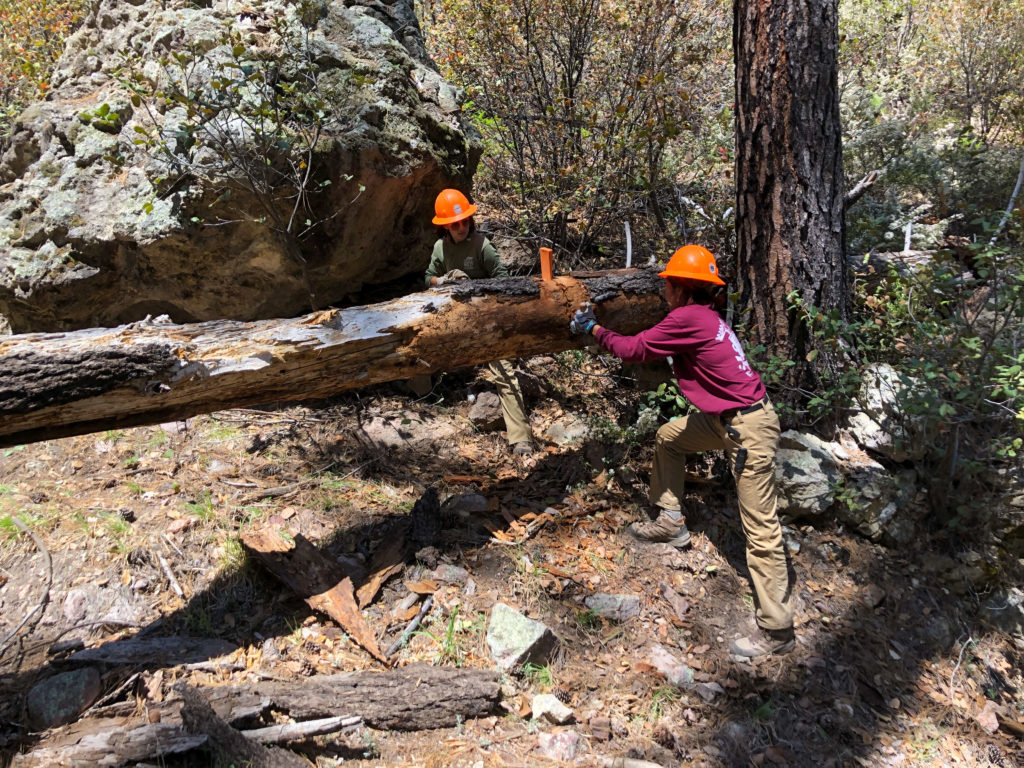
“They say there are old mushroom hunters and bold mushroom hunters, but there are no old bold mushroom hunters.”
Dirk tilted his head and looked at me with a twinkle in his eye. I smiled and devoured another bite of syrup-slathered pancake. I catalogued this piece of information away along with other bits of advice that Dirk gave about foraging for mushrooms in southern Arizona. It was Saturday morning on the 30th of April, and the Wild Stew Field Crew was enjoying breakfast alongside a group of volunteers. The collective outdoor wisdom among the 15 or so people gathered was immense. Especially in comparison to me, a former teacher who only joined the Wild Arizona field crew at the end of March.
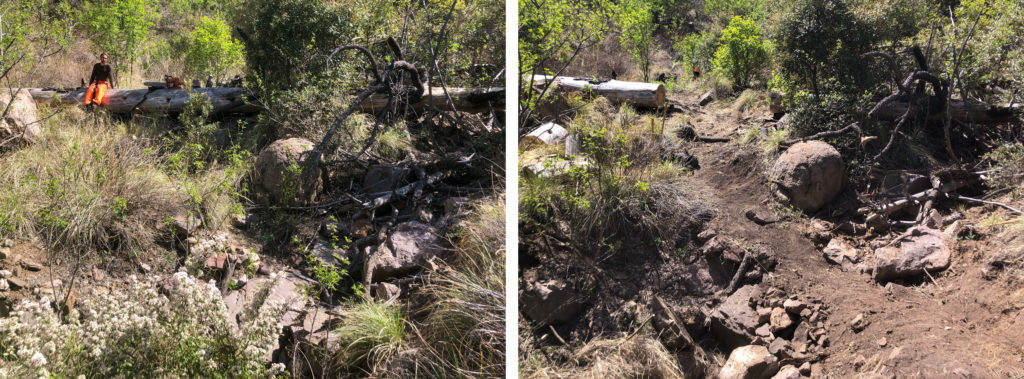
Days earlier, Jonathan, Lauren, Nizhoni, and I had headed up the Ida Peak trail at 7 am, carrying an assortment of trail maintenance tools: hand saws, “loppers”, a chainsaw and fuel, and an assortment of tread tools used to improve the walking surface of the trail.
Up, up, up we went, stopping every so often to cut a log, widen the trail corridor or clear a drain. Trail work in Arizona often means dealing with sizeable changes in elevation. In the southern part of the state specifically many of the most scenic trails exist in mountain ranges where the scarce Arizona rain falls more consistently than in the desert, and a variety of plant and animal species thrive.
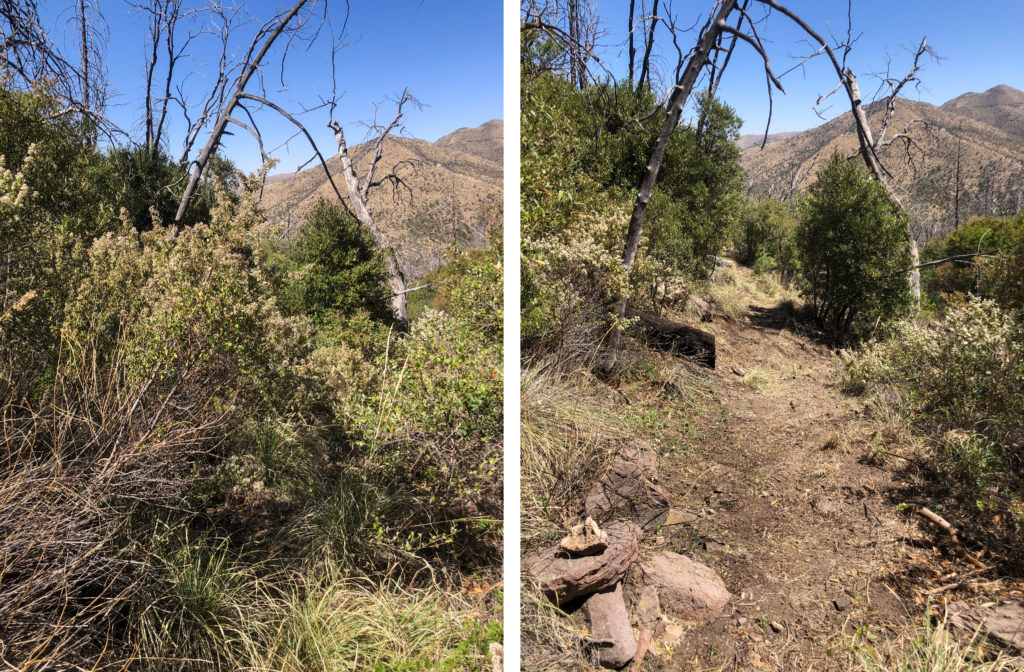
Breathe in, breathe out. Legs burning, chest heaving. I looked back behind me. Nizhoni offered a wry smile. She and I started our employment at Wild Arizona at the same time a month or so ago, and we were both still getting our trail maintenance legs under us. For the next several days the four of us worked our way up the Ida Peak Trail in the Chiricahua Mountains returning each night to our front country camping spot. Jonathan, our crew leader, reminded us several times that our objective was to get the lower mile and a half of the trail cleared of deadfall and as much brushing done as we could. After removing nearly 60 downed trees and trimming back thousands of feet of brush we had gotten closer to that goal by Saturday afternoon.

“It’s cracking!” Lauren grunted as she muscled the large crosscut saw back and forth, using her whole body to maximize force. Jonathan watched from a short distance, leaning on an aluminum pole sometimes used to add leverage when moving logs. Five minutes earlier he had been on the other side of the saw, working in tandem with Lauren to cut through the large log. However, as the saw got closer to finishing the cut, he moved out of the way. Sometimes, a certain side of a log being cut is too dangerous and the best thing to do is to allow one of the sawyers to single buck the log, especially as the cut nears the end.
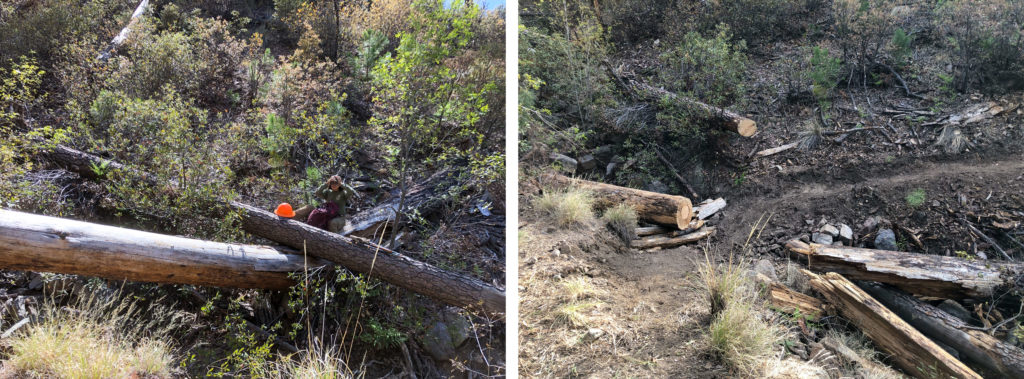
Just before Lauren could finish the cut, the saw slowed suddenly to a crawl. There are many forces at play when large pieces of timber are lying on the ground. One of these is called a bind. A bind occurs when the fibers in one or multiple parts of a log become tightly compressed together, causing the saw to stick or “bind” in the cut. There are different ways of counteracting this, but one of the most common ways is to hammer wedges into the mouth of the cut, forcing the cut stay to open and allowing the saw to move more freely. David, one of the volunteers we worked with this hitch walked forward with a plastic wedge. Minutes later with his assistance the suspended half of the log crashed down into the drainage, out of the way of the trail. “Good job, Lauren!” I proclaimed smiling.
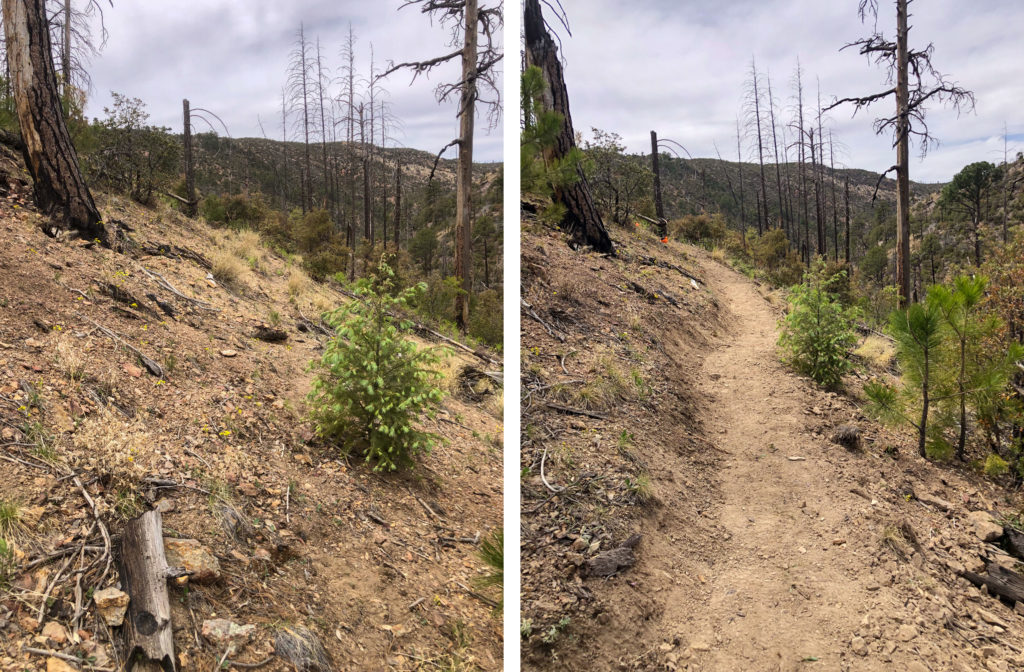
Two days before sawing this particular log, we had switched work sites from the Ida Peak Trail to the nearby Rattlesnake Trail, still within the Chiricahua Mountains. For this second part of the hitch we worked with a group of volunteers led by the experienced and always jovial John Sumner. John and his crew focused on clearing several hundred logs from the trail while the four of us repaired eroded portions of the tread and constructed rock and dirt ramps in and out of the dry river bed. At certain points the trail became so obscured or overgrown that it took ten minutes or so to find it again. However, when we finally hiked back to our vehicles on Wednesday May 4th, we left both the Rattlesnake Trail and the Ida Peak Trail cleared of trees, much more visible and relatively free of obstacles. Another successful hitch in the books.








